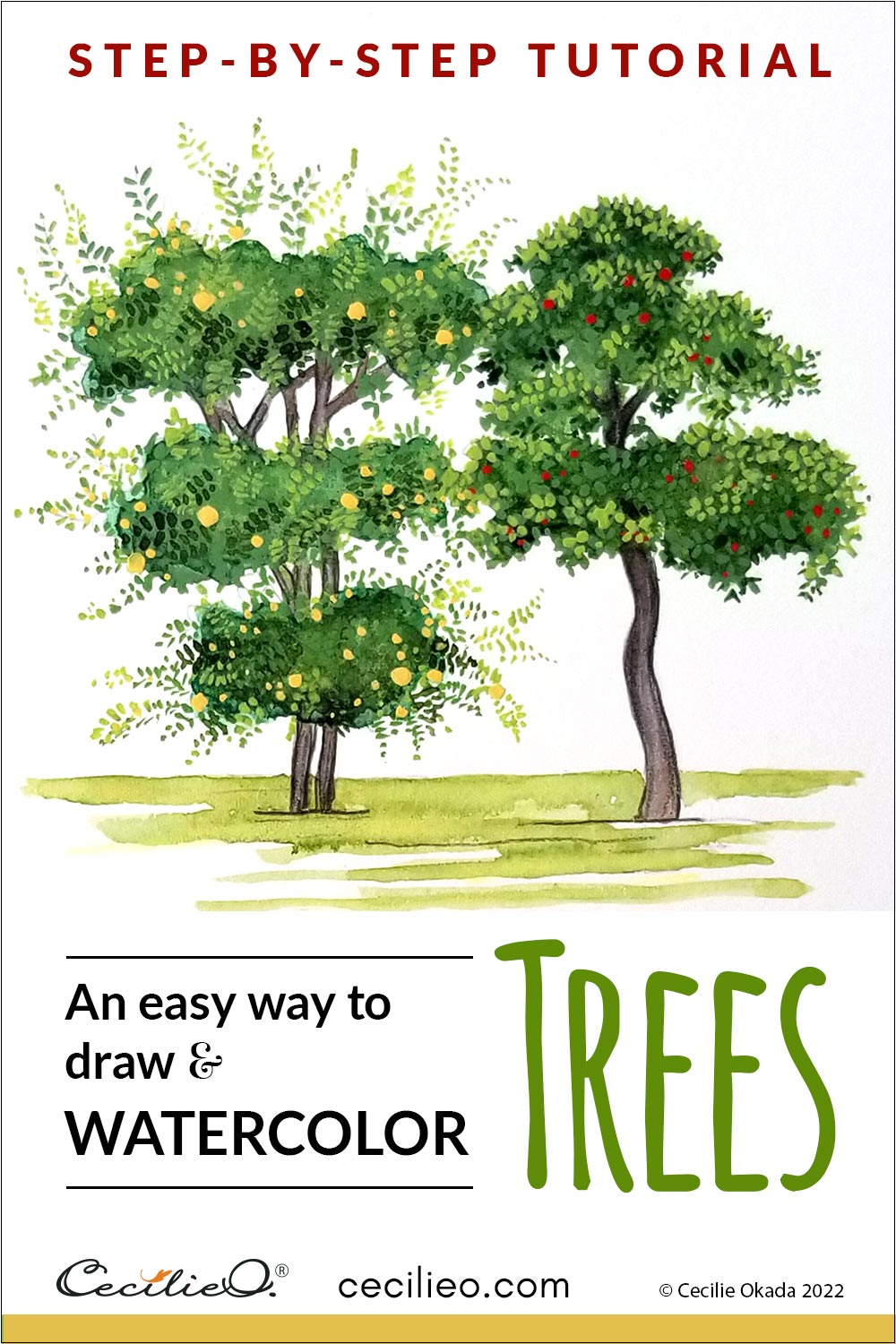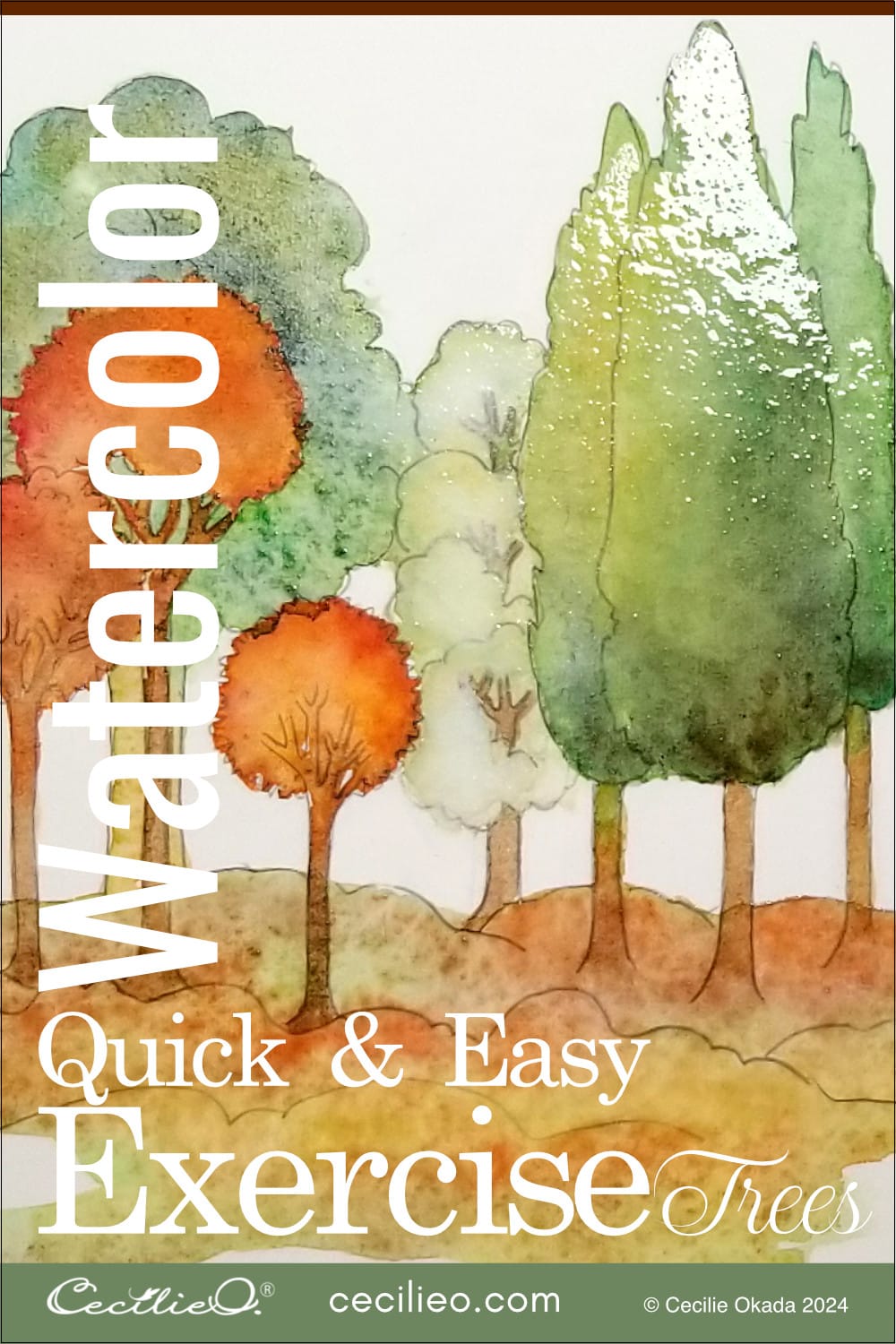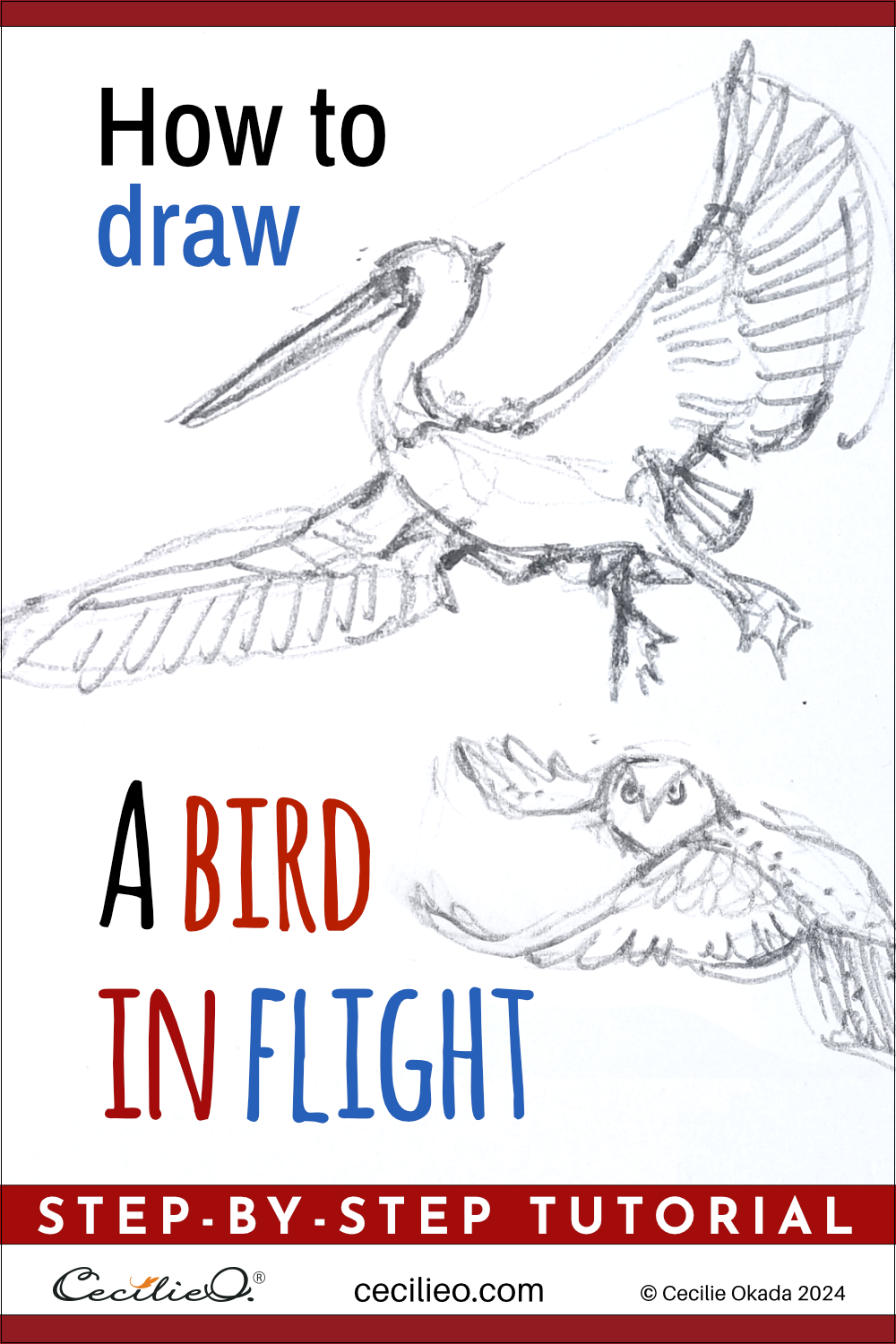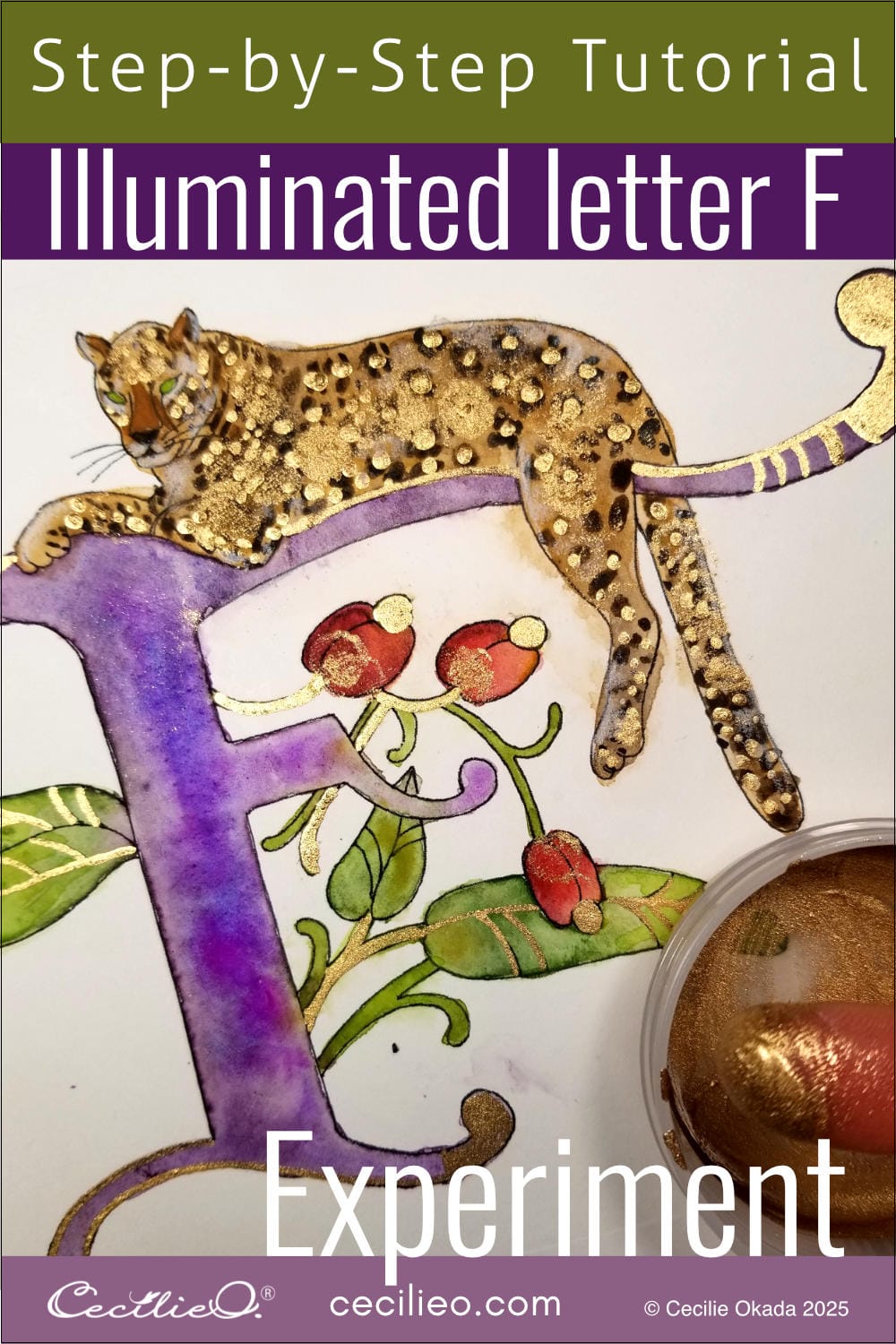
Estimated reading time: 10 minutes
Learning to draw and watercolor trees, an old oak tree, or evergreens often come to mind. Would you like to go beyond these stereotypes? The world is full of uncommon trees with gorgeous shapes. They will ignite your imagination. In this tutorial, I show you how to draw trees easily and watercolor them in the spirit of the East. Why? It is because traditional Asian art takes a unique approach. It is a simple method that you can imitate with ease.
Finding trees to draw and paint
If you follow me on Pinterest, you will discover how much I love Eastern art. So finding art references with trees for this tutorial was easy. I also have a habit of photographing beautiful trees whenever I see them. Parks and gardens sometimes have unusual trees. Here in Japan, I see magnificent trees everywhere I go. In any case, a quick Google image search for tree species will serve up many varieties.
Step 1: Cracking the secret of Eastern tree art
Before we start painting, let me take you on a brief tour of Eastern tree art. Unless we analyze, it is hard to apply what we see
Tree art & reference photo no. 1
The top left tree is a painting by contemporary artist Jethro Buck. He has an enduring interest in Indian miniature painting. Look closely, and you will see why I included his painting next to Japanese and Indian trees.

The upward curving leaf assemblies are similar to the Japanese pine (right). Jethro painted three layers of leaves to emulate depth. The colors range from dark to light green. On the Indian tree (bottom), you can see the same approach, although the light green is more vivid. The simple leaf shapes are almost the same.
This painting of Krsna and Radha uses the same technique.

Tree art & reference photo no. 2
The image below has cutouts from famous Persian miniatures. Notice how the leaves outside the main form create a beautiful effect. We can’t see any details inside the main green shape, except vague stylized leaves.


Tree art & reference photo no. 3
The image to the left is a detail from an illustration of Radha and Krsna walking in a grove. To the right is another Indian painting. In these two, the artist had fun stylizing the leaves further.


Tree art & reference photo no. 4
Cypress trees with their distinctive form have a special place in art. In Islamic pottery and carpets, it is a frequent subject of stunning beauty.


Tree art & reference photo no. 5
The lush garden in this lovely painting from the Met shows us many ways to play with leaves and trees. Observe how simple the details are. It is a painting technique that is easy to adapt.


A meditative way of painting
The painting styles we have examined have one thing in common. They don’t have any broad, expressive strokes. Instead, the trees are composed of many, many small brushstrokes that require patience. The repetitive task of painting small leaves can take you into a calm, mindful flow. Beautiful compositions sometimes emerge from calm.
Step 2: How to easily draw trees
Have you read my blog post about doodling? Before you start sketching, do some doodling to warm up your hand.
Look intently at the shape of the tree. Don’t focus on the trunk and branches. You need to take in the tree as a whole. First, make some quick sketches to assess the shape. Bundle leaves into broad forms. There should be no concern about the quality of the drawing.
When familiar with the shape, get on with the finished drawing. Pay no attention to details. Relax your hand and let it do what it wants to. Forget about pretty linework.
Below are my drawings of the five trees.



Step 3: Transfer the outlines of the trees to watercolor paper
If you want to make a composition of the trees, trace the outlines on separate pieces of tracing paper. Play with different arrangements.
I scanned my trees and used Photoshop to arrange them.

In my case, I traced the printout of the Photoshop composition. The image below shows the transfer to watercolor paper. Do you want to use my outlines and trace them for your painting? Go to Membership on One Tree Art Club | Creative on the Buy Me a Coffee platform.

You can also access loads of free outlines. Each drawing goes with a watercolor tutorial. Sign up for the One tree Art Club newsletter.
Step 4: Paint the watercolor base for the trees
To make it simple, paint all the trunks and branches brown.

The image below shows the colors I used for my watercolor tree paintings. The colors in the punnet are white gouache mixed with watercolor. (Gouache is opaque watercolor). You need these opaque colors to paint the leaf details.

I have drawn the broader shape of the leaves for each tree. Thus it is easy to watercolor the base colors. Use a generous amount of water so that the colors bleed into each other. For dynamism, use a variety of greens, yellows, ochre, and a touch of red. For dark green, just mix in a little black.


Step 5: Paint the leaves with gouache to create beautiful trees
In advance, mix your three levels of green, opaque paint. Dark, middle, and light. Start painting the tiny leaves. You may enter a peaceful, meditative state. Play some lovely music. I often listen to a podcast while painting. It helps in keeping my critical mind at bay.
Observe how I have painted the leaves in layers and then red and yellow dots. The individual leaves are not pretty, but as a whole, it looks nice.


The top two trees are now finished paintings.

And the 3 at the bottom? I would love to see how YOU paint these trees to a finish. Unlike the artists who created the reference images, you are not bound by a strict school of painting. Let your imagination loose! You are welcome to join our One Tree Art Club on Facebook and share your artwork. It is a group of friendly, supportive artists who are learning, just like you.
See more tree inspiration from a contemporary artist painting in the Mughal style.

More watercolor tutorials about trees and leaves to explore:
If you wonder about what kind of art materials for this tutorial, check my Guide to Art Supplies.






